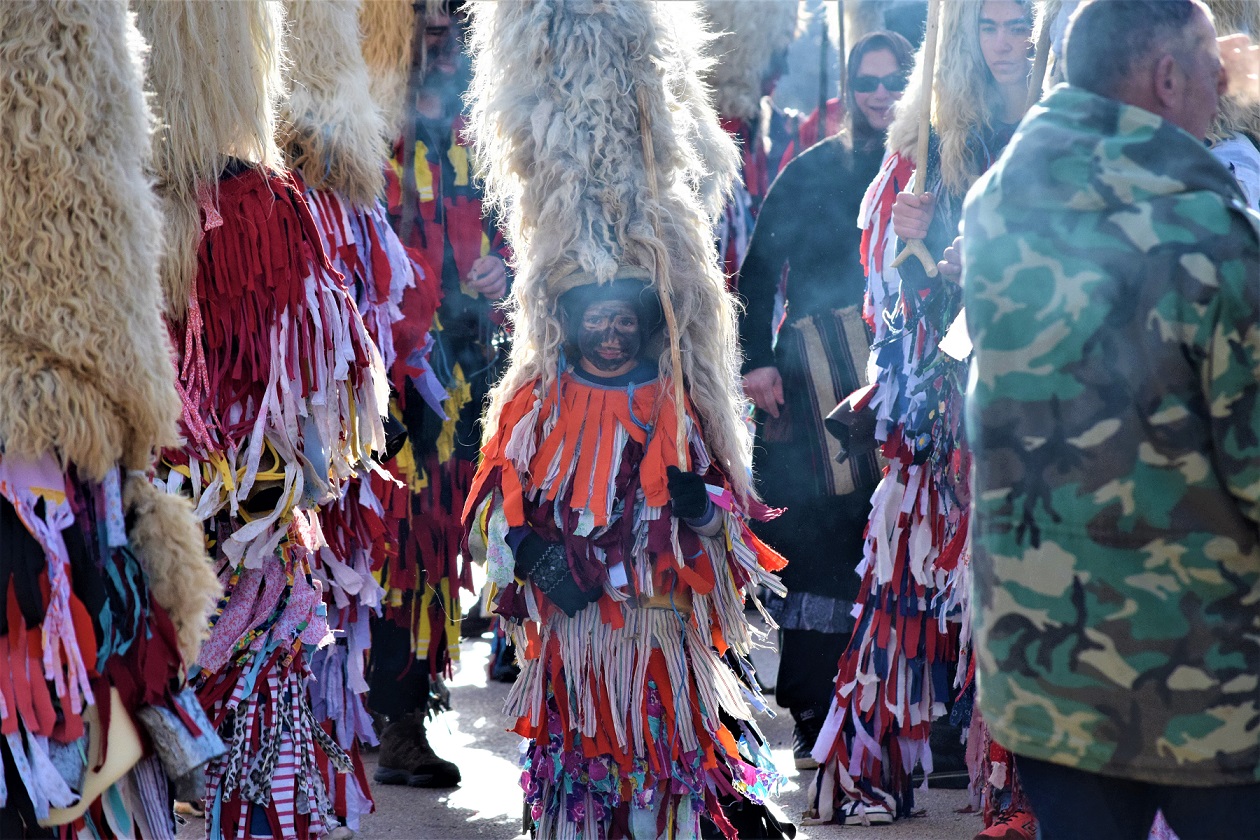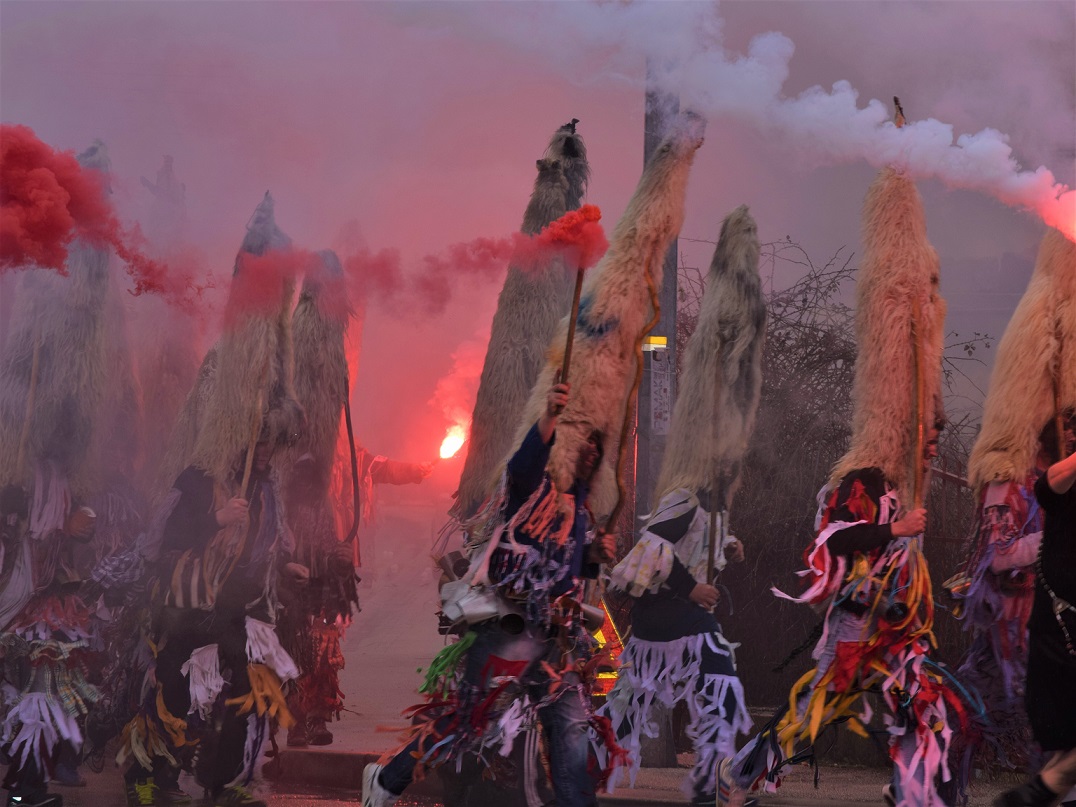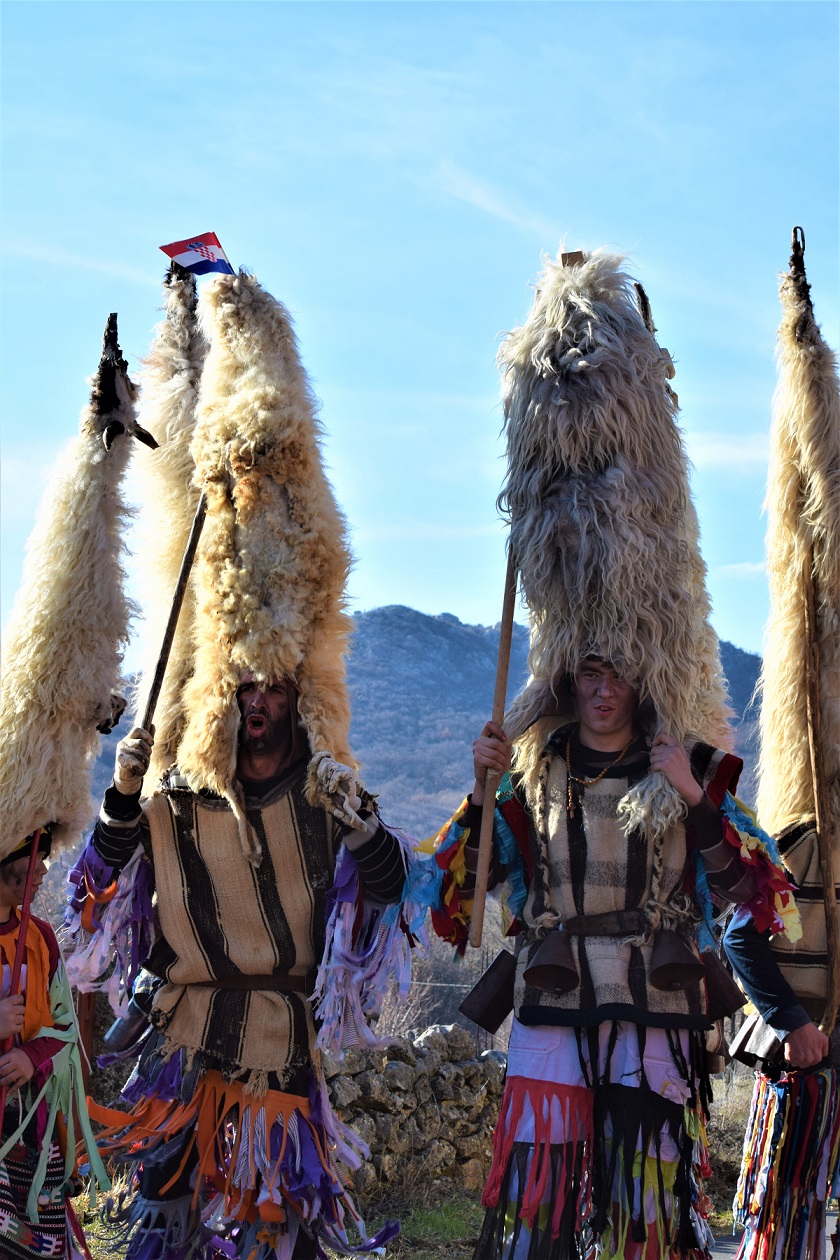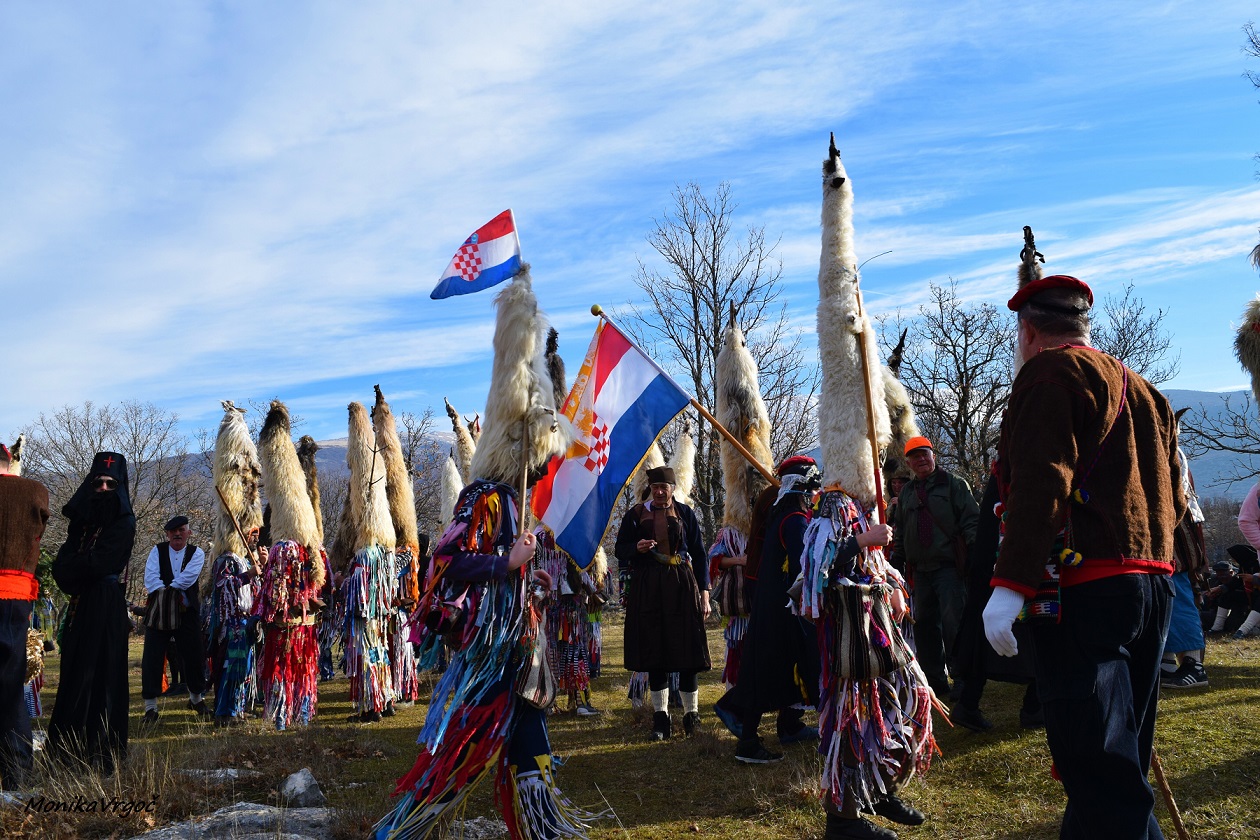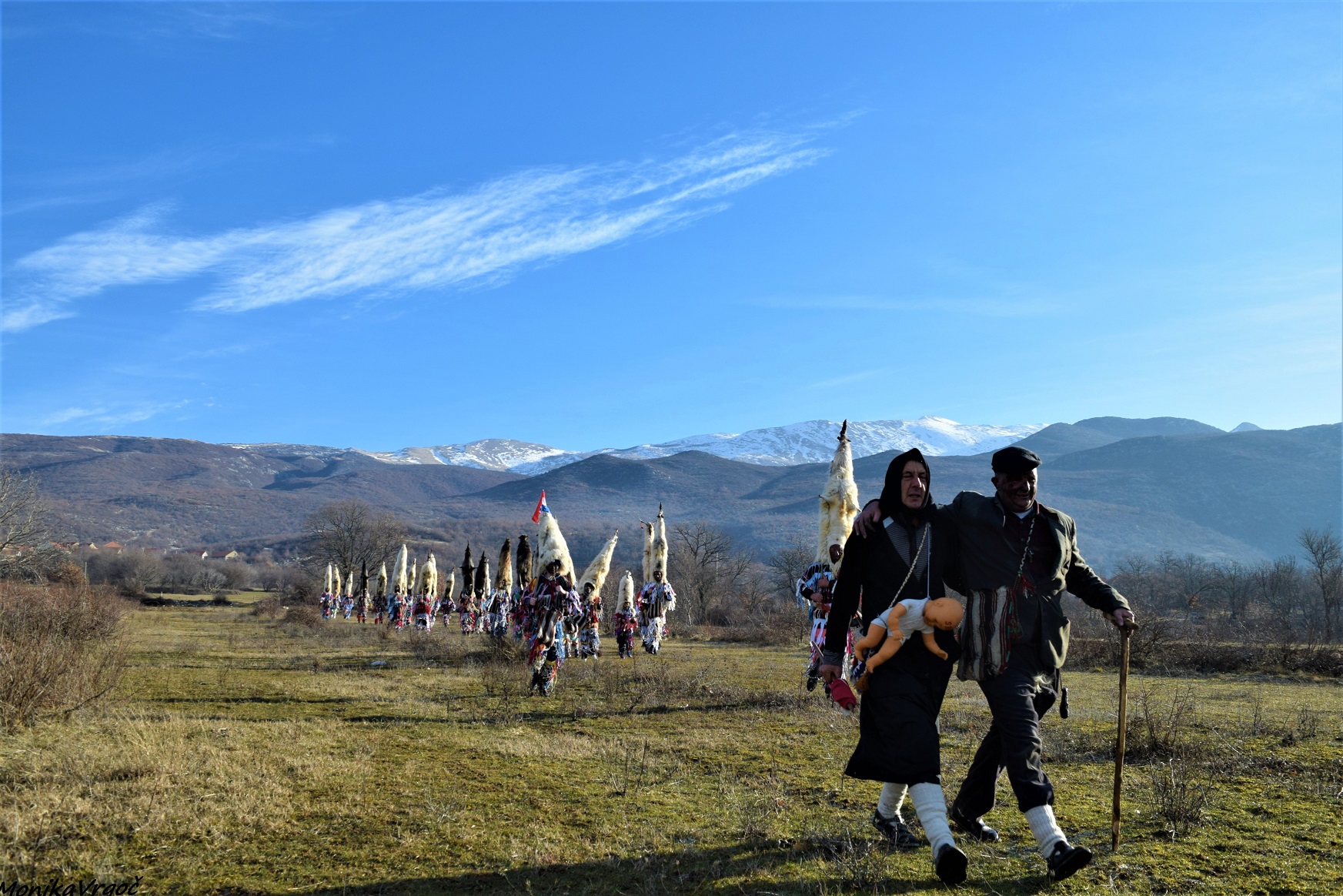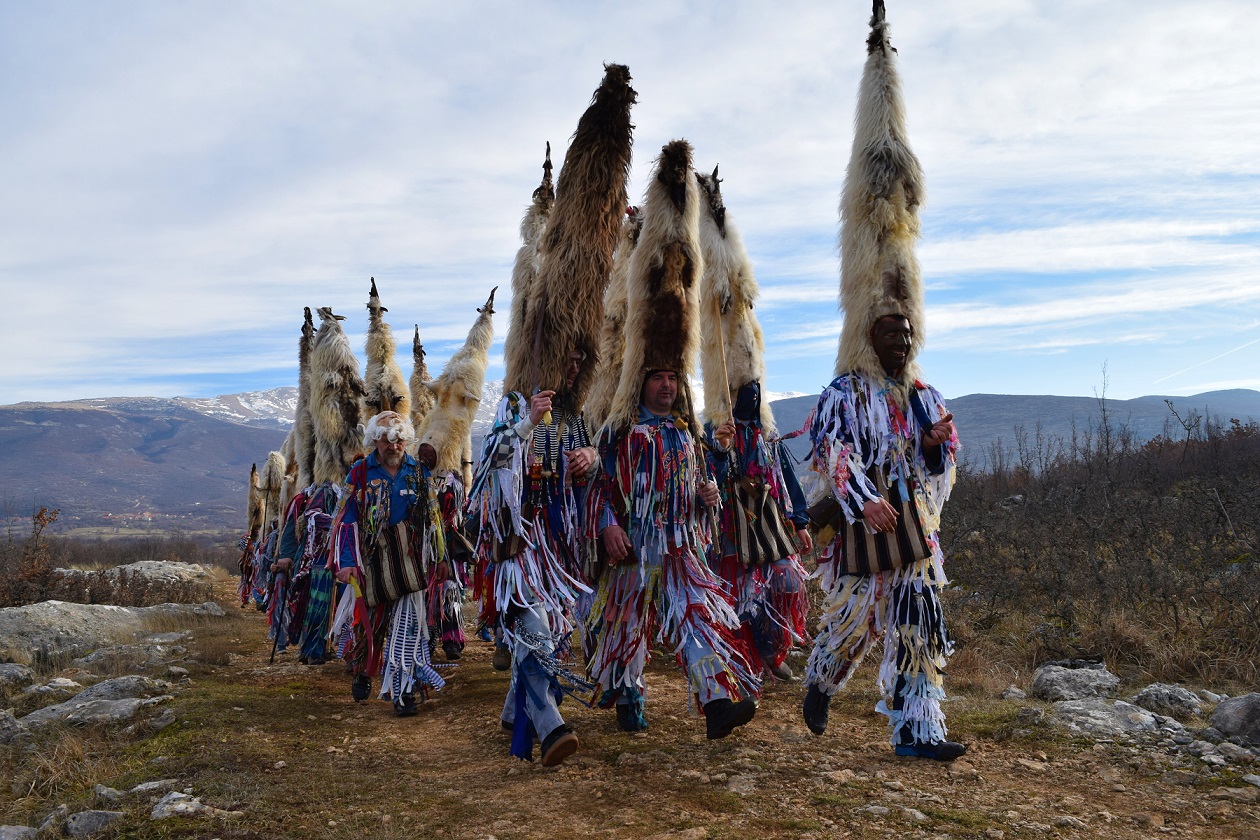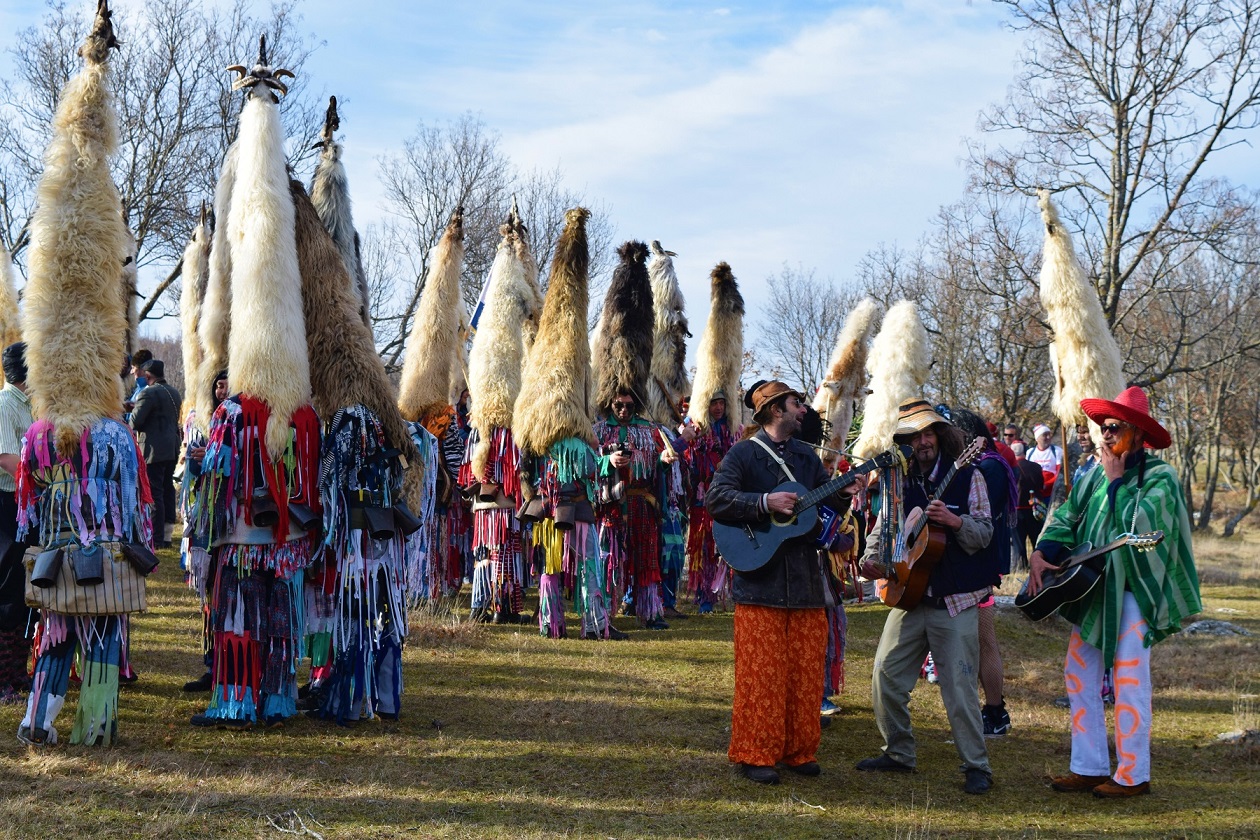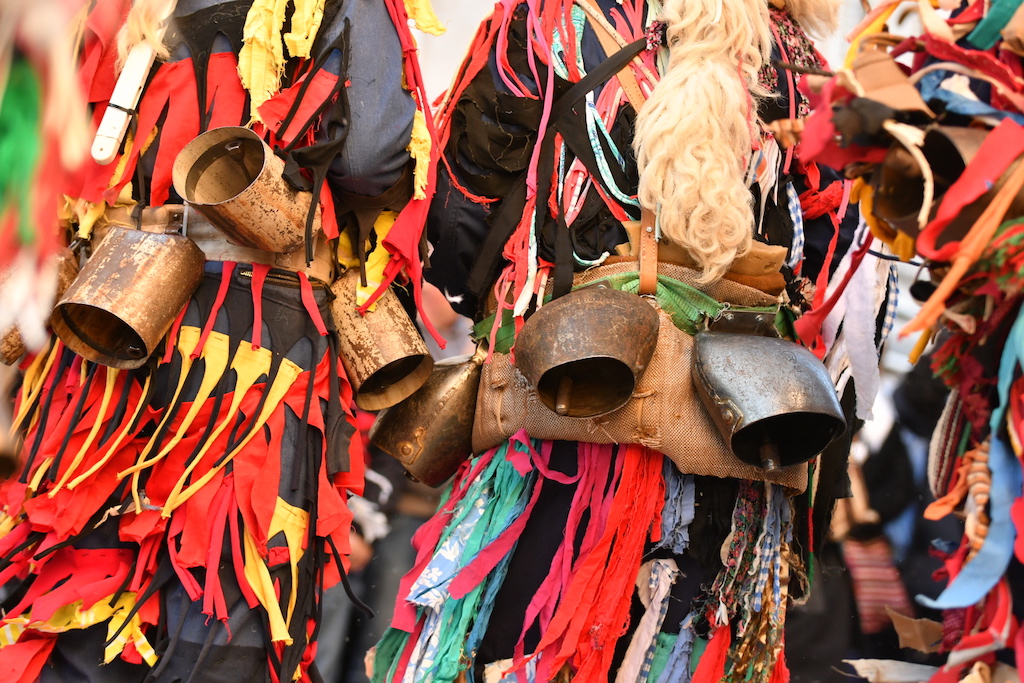Didi s Kamesnice and More Carnival Customs from the Dalmatian Hinterland
February 13, 2021 – Sinj and the Cetina region have long attracted attention with unique and exciting events. One of them is certainly their well-known masquerade festival with 'Didi s Kamesnice', masquerade group from the village of Gljev in the Dalmatian hinterland.
Cetina Region's Masquerade Festival should have been held for the seventh time this year, as well as the centuries-old gatherings of masquerade groups in the Podkamešnica villages, which were supposed to precede the festival and the usual final carnival events. However, due to the ongoing coronavirus pandemic, it was all postponed for the next year.
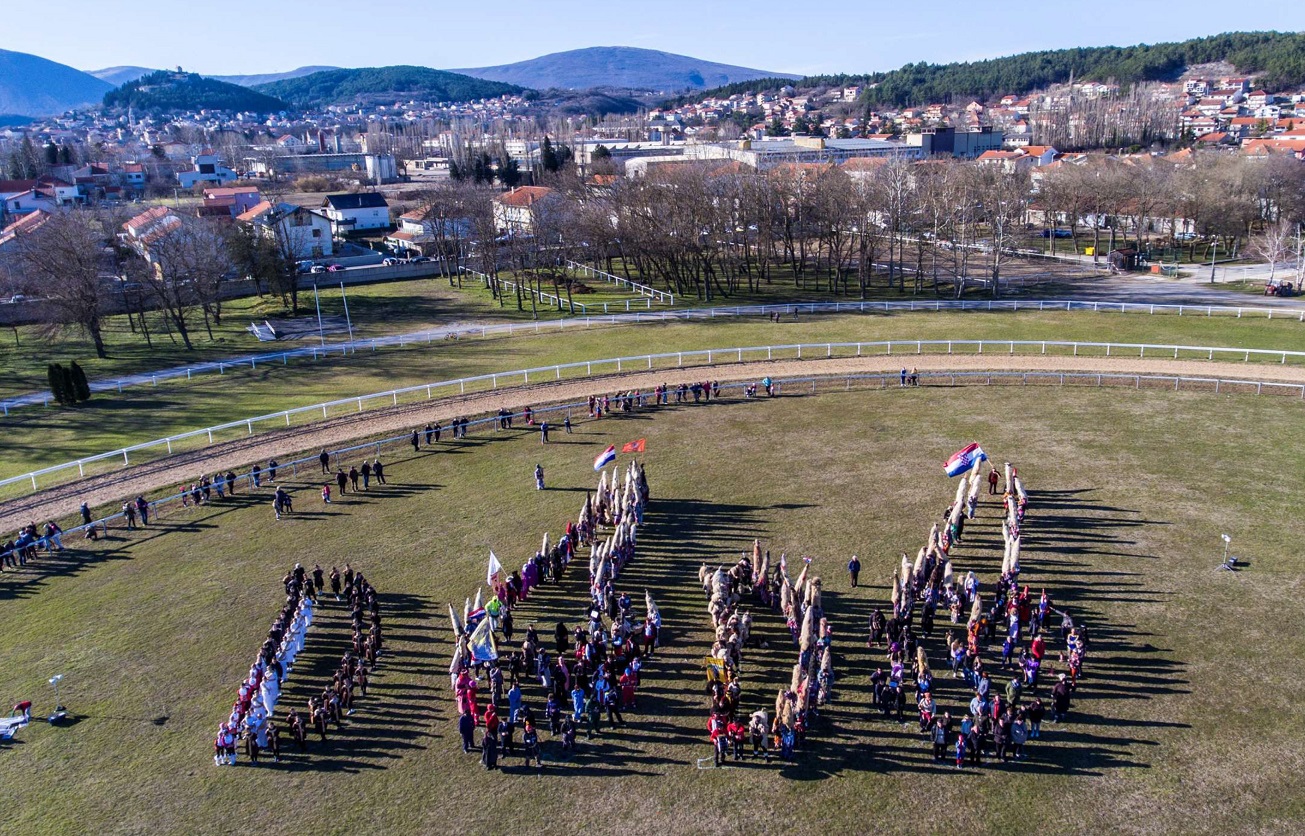
Millennial photo of the Sinj region masquerades - DIDI / Šime Strikoman
At the Festival, numerous masquerade groups present themselves to the general public in one place. The result is a lively, cheerful, colorful, and noisy procession that maintains a long tradition, according to carefully and strictly established rules.
Croatian protected intangible heritage
Masquerades are the best bearers and guardians of carnival customs in the Cetina region. After the Holy Three Kings' feast on January 6, they set out on visits to villages and hamlets. They are even included on the list of protected intangible cultural goods of the Republic of Croatia, which testifies how precious they are.
Podkamešnička villages are villages at the foot of Kamešnica mountain located on Croatia's border with Bosnia and Herzegovina, near Sinj in the Dalmatian hinterland.
In the villages of Gljev, Han, Obrovac Sinjski, Bajagić, and Gala, masquerade processions are a unique and original way of depicting ancient customs interwoven with the sound of masquerade bells and other accompanying rituals.
Masquerade procession in Obrovac Sinjski / Monika Vrgoč
In the municipality of Otok, each hamlet has its own masquerade group (Jelašce, Priblaće, Živinice, Gala, Ruda, Udovičići, and occasionally there are groups Glavičica-Priblaće, Strana with masquerades from Ovrlje and Korita). In the town of Trilj, masquerade processions take place in the villages of Grab, Jabuka, Košute, Vedrine, Vrpolje, Čačvina, and Velić.
Masquerade procession in Otok / Monika Vrgoč
Masquerade procession in Vrpolje / Monika Vrgoč
Driving away winter and bad spirits
The carnival procession's schedule is based on traditional rules, not subject to any changes, and only men participate in it. At the head is a group of white masquerades and wedding guests, then a group of comedies, and finally, with a certain distance, black masquerades.
The wedding party, which symbolizes the end of winter and spring arrival, was once led by the first grandfather (hrv. dida) and nowadays by the flag bearer (hrv. barjaktar).
Gljev / Monika Vrgoč
The masculine, pregnant bride, accompanied by a groomsman, is looking for the groom, which is the procession's main "task."
There are also married women, girls, and other wedding characters dressed in formal attire (folk costume).
Turk commands the masquerades, taking care not to mix white and black wedding guests, who must never be in the same place at the same time. The Turk and the aunt's characters are associated with the long presence of the Ottomans in this area.
Black wedding guests / Monika Vrgoč
Behind the wedding are comedies, a masquerade group that criticizes current social and political topics without sparing criticism.
Grandparents lead black weddings. They are bearers of the fertility cult who, by simulating sexual intercourse, invoke a better and more abundant annual harvest, another indispensable ritual element.
Grandparents in Gljev / Monika Vrgoč
There are also mourners in the procession, mourning widows who shout funny and comic slogans.
The most attractive and impressive part of the procession are the imposing "didi." They wear sheep's wool up to 1.5 m high on their heads and bells around their waists. They are dressed in old clothes sewn with colorful fringes.
They embody the age-old ritual struggle of good spirits with winter, which they drive away with noise and jumping. With the loud ringing of bells, they cast spells from cattle, which, along with fertility and spring arrival, testifies the most important preoccupations of our ancestors.
Monika Vrgoč
Monika Vrgoč
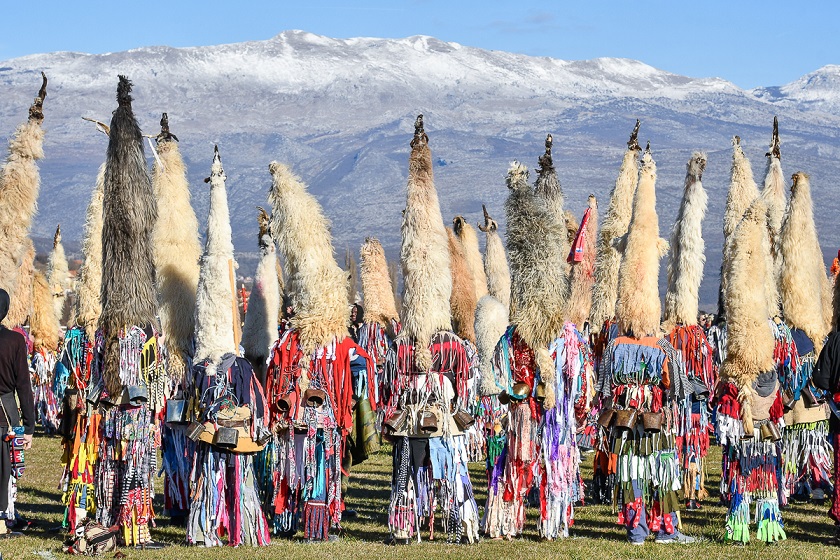
Ivana Pavičić
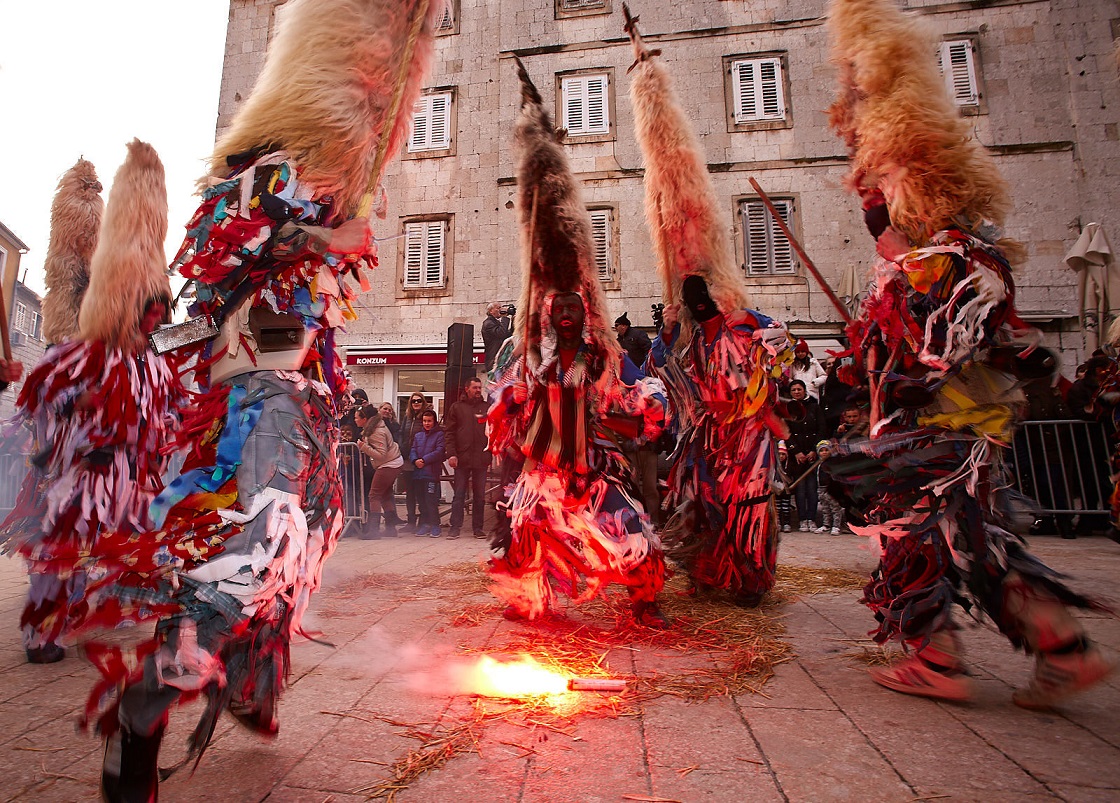
Nikola Belančić
Rich and inspiring carnival tradition
This long tradition of carnival customs, which preserves local identity, is nurtured and promoted by the association "Didi from Kamešnica" from the village of Gljev.
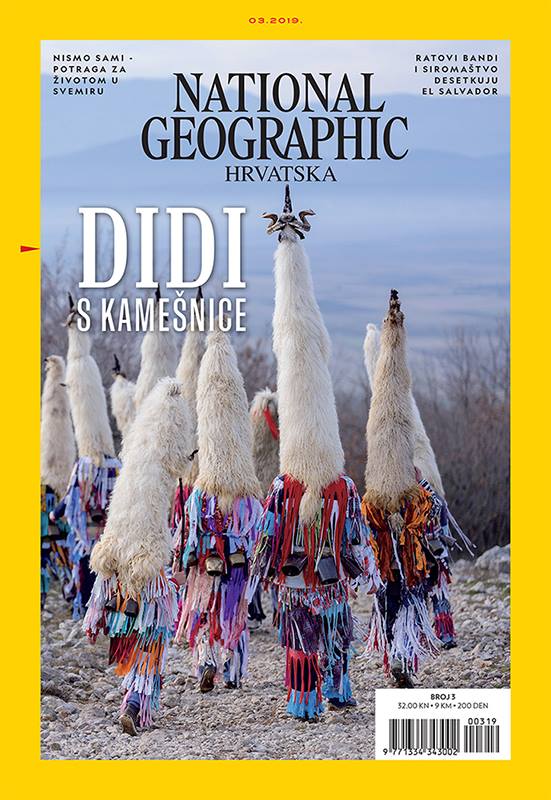
The Cetina region's carnival festival seeks to popularize the rich tradition of carnival customs, unique in Europe. Although carnival customs with similar themes exist in other parts of Croatia and Europe, they always embody the ritual struggle of good spirits with winter.
Therefore, "Didi" are welcome guests at festivals throughout Croatia and Europe and an inspiring motive for numerous scientific research, exhibitions, and lectures on the topic of intangible heritage. The famous magazine National Geographic brings the unique "Didi s Kamešnice" on one of its covers.
All photos © Sinj Tourist Board
For the latest travel info, bookmark our main travel info article, which is updated daily.
Read the Croatian Travel Update in your language - now available in 24 languages.
PHOTOS: 6th Carnival of Cetina Region A Success!
February 18, 2020 - Behind us is another hugely successful Cetina region Carnival.
Organized by the City of Sinj, the Sinj Tourist Board and the Sinj Krnjeval Association, for the sixth consecutive year, we had the opportunity to experience an unusual, colorful, noisy and cheerful carnival procession. Nearly 400 participants from Glavice, Karakašica (Bukva), Vrpolje, Čačvina, Bajagić, Obrovac Sinjski, Gala, Gljev, Krenjaval Association of Sinj and Grobničko Donolaši (a traditional carnival group from Čavle near Rijeka), started from the hippodrome and continued through the streets of Sinj. The lively groups were led by Kristina Krizanac, Mayor of the City of Sinj, and Monika Vrgoc, Director of the Sinj Tourist Board.
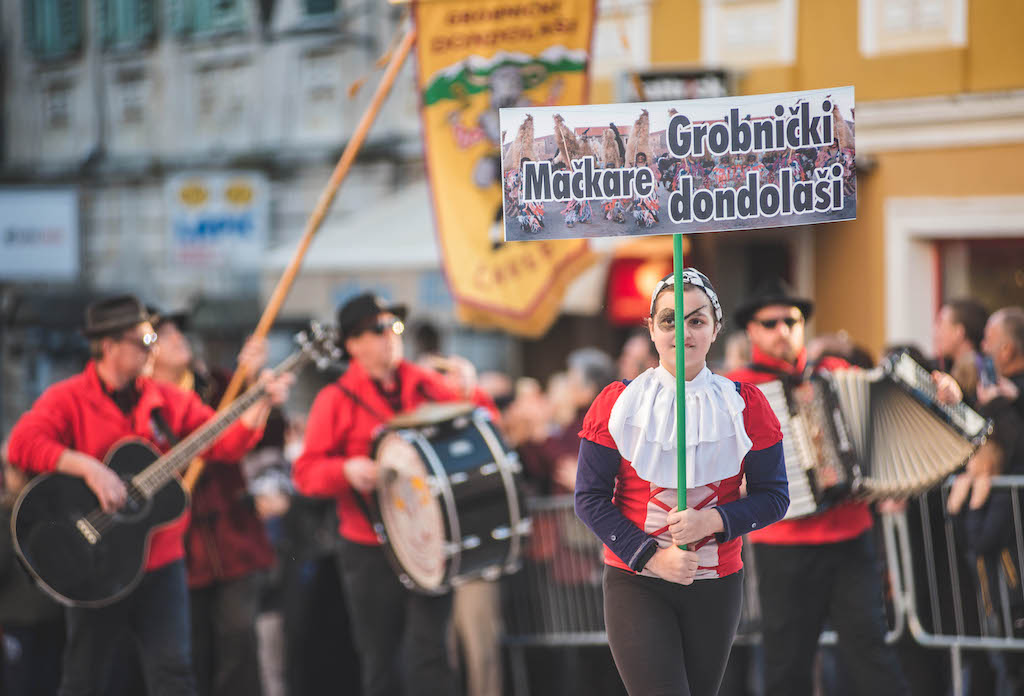
After a parade through the city streets, the carnival groups gathered in the Pjaca where the central event was staged. The splendid and inimitable didi vividly portrayed the long and unique tradition of carnival customs of the Cetina region.
The carnival groups didn’t fail to be comical either. For example, the Karakašica group demonstrated that local transport provides passengers with emergency services.
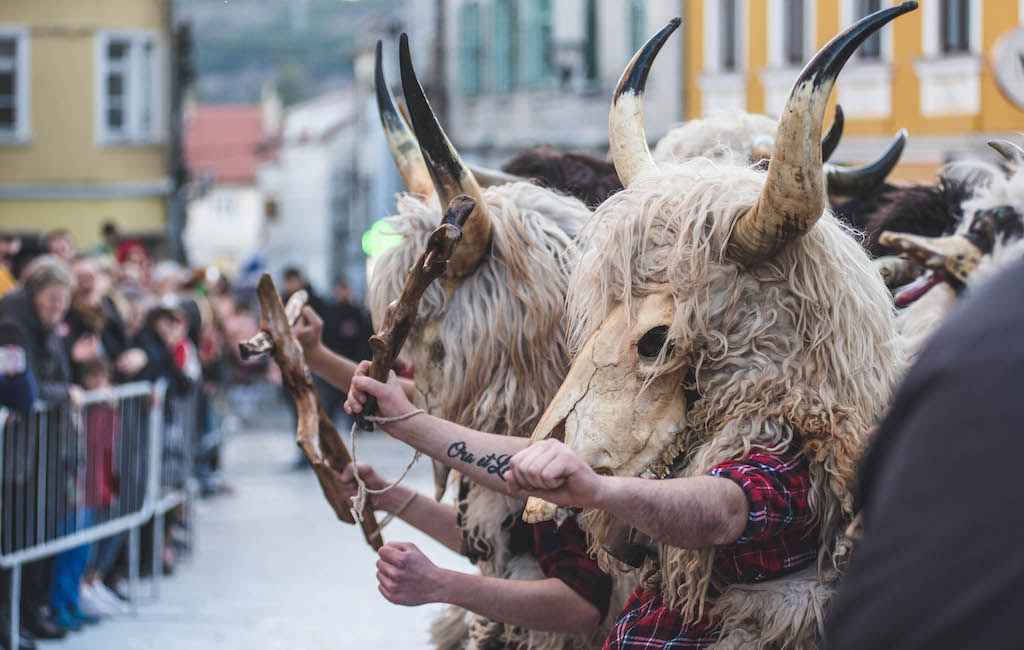
The carnival crowd continued their colorful day at Dr. Franjo Tudjman's Square in Sinj with delicious beans, donuts and live music by Piromani.
It is worth noting that the 6th Cetina carnival was perpetuated by famous photographer Sime Strikoman with his 701 and 702nd-millennium photography at the Hippodrome in Sinj.
On this occasion, the Sinj Tourist Board would like to thank all participants of the jubilee 6th Carnival of the Cetina Region who, through their participation, supplemented and refined this event, important both for the tourist promotion of Sinj and for the preservation of valuable traditions and carnival customs.
They would also like to thank the SRMA and the Red Cross Sinj for their valuable assistance in organizing and preparing the Sinj Majorettes and Sinj City Music for their performances, as well as the employees of KUS-Sinj, JVD Sinj, PP Sinj, Cetinska Krajina Čistoća, Alkar Hotel, Alkar KK and Zagrebačka Brewery.
We hope that we have successfully driven away the evil spirits of winter and welcomed spring!
To read more about Inland Dalmatia, follow TCN's dedicated page.
Photos by Ivan Pavičić and Roko Pavlinušić


